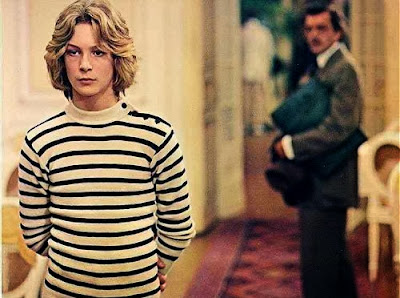I am a camera - Berlin
 In the Battle for Berlin in 1945 125,000 civilians were killed (including 6400 suicides and 22,000 heart attacks). The city was left in ruins after years of bombing followed by street fighting before the Nazi surrender in May 1945. Among the buildings destroyed were the major music venues, including the Philharmonie and Konzerthaus. In July 1945 Allied troops took over the west of the city from the occupying Russians, and the division of Berlin had begun. The famous photograph above of Russian soldiers hoisting the Soviet flag over the ruined Reichstag became a visual symbol of the devastated and divided city.
In the Battle for Berlin in 1945 125,000 civilians were killed (including 6400 suicides and 22,000 heart attacks). The city was left in ruins after years of bombing followed by street fighting before the Nazi surrender in May 1945. Among the buildings destroyed were the major music venues, including the Philharmonie and Konzerthaus. In July 1945 Allied troops took over the west of the city from the occupying Russians, and the division of Berlin had begun. The famous photograph above of Russian soldiers hoisting the Soviet flag over the ruined Reichstag became a visual symbol of the devastated and divided city.The composer Arvo Pärt is no stranger to ideological conflict. He left Soviet controlled Estonia in 1980, staying first in Vienna before making his home in Berlin. In 1989 the Berlin Wall fell, and in the following year Pärt composed his Berliner Messe for the German Catholic Days held that year. The Berliner Messe is like Berlin itself - haunted by the past with its references to Plainchant, but equally looking forward to the future with confidence and energy.
I revisited Berlin in November. I knew the city well when it was divided but this was my first visit since reunification. Here are some photos of that extraordinary city in 2005:
This is the River Spree a short distance from the Reichstag. Pre-1989 the Wall followed the river here, and this was the point where many escape attempts were made, and many lost their lives. I can remember standing at almost this exact point in the 1970s, and looking at the clearly visible communist guards on the other bank. Photo - On An Overgrown Path
The Neue Synagogue (above) was inaugarated in 1866. As well as being used as a place of worship it was a venue for concerts. Albert Einstein played a violin recital here in 1930. Despite rampant anti-semitism the synagogue remained in use until 1940. The building was virtually destroyed by bombs in 1943, and it was not until 1995 that it reopened as a museum and cultural centre. Photo - On An Overgrown Path
Above is the controversial new Holocaust Memorial by American Architect Peter Eisenmann. It was inspired by Prague's Jewish Cemetery with its closely packed gravestones. The memorial comprises 2700 grey slabs. The construction of the memorial was plagued by controversy, including the discovery that supplier of the anti-graffiti paint for the blocks was part of the industrial conglomerate that had produced the Cyclon-B gas used in the Nazi death chambers. The photo is taken from where the Wall once stood, and looks across to the centre of the former East Berlin, Alexanderplatz. Photo - On An Overgrown Path
Finally that classic symbol of Berlin, the Brandenburg Gate. The Godess of Victory (with the Prussian Iron Cross restored post-reunification) on the top is a potent expression of the victory of good over the many dark forces that have gripped this extraordinary city. Photo - On An Overgrown Path
Report broken links, missing images and other errors to - overgrownpath at hotmail dot co dott uk
Image credits:
Header - Photo by Yevgeny Khaldei from μια φωτογραφία , μια ιστορία
The other five pictures were taken by me on an 'old-school' Nikon F50 SLR in November 2005 using 200 ASA film.
Image owners - if you do not want your picture used in this article please contact me and it will be replaced
If you enjoyed this post take An Overgrown Path to Furtwängler and the forgotten new music









Comments
Thanks for the sampler from your latest photo-album! (I'll reserve judgment on the Eisenmann Monument
to the Murdered Jews of Europe until I've fully experienced it in person. When I was last in Berlin, I walked around the then-open building site, and examined about a score of slabs which had been constructed on the far edge of the now completed "field". Also, I hope that the awful, bright large helium balloon advertising condominia next to the Monument has now been grounded.)
Spindly architecture, but tongue-twisting names.
Interesting article on the architectural merits (or not) via
this link.
I am more intrigued by the review's comment that the Chancellery Plus project only cost about a quarter billion Dollars or Euros (give or take twenty percent). Could that be for only one of the three buildings (the Chancellery proper)? (Recall that the rebuilding of the Prussian Royal Palace, next to Museum Island, in mitte Berlin, is projected at about $850 million.)
I knew that they were trying to cut costs, given the backlash over the costs of reunification and the one East German mark for one West German mark social compact. Or perhaps I simply confused the cost of this Spree Bogen Federal project with the costs of the Lehrter Station intermodal transportation center next to it (which involved reconfiguration of the inland canal and flood control system, train systems, auto tunnels, and the U-Bahn metro system).
Again and briefly, as for the architecture, I was not a fan of one of the same architect's 1992 Bonn Art Museum; which featured similar spindly columns and cardboard-like thin post-modernist facades and planes. See:
http://www.bonn.de/imperia/md/images/touri-kult-freiz-sport/museen/kumubn-aussen_204x307.jpg